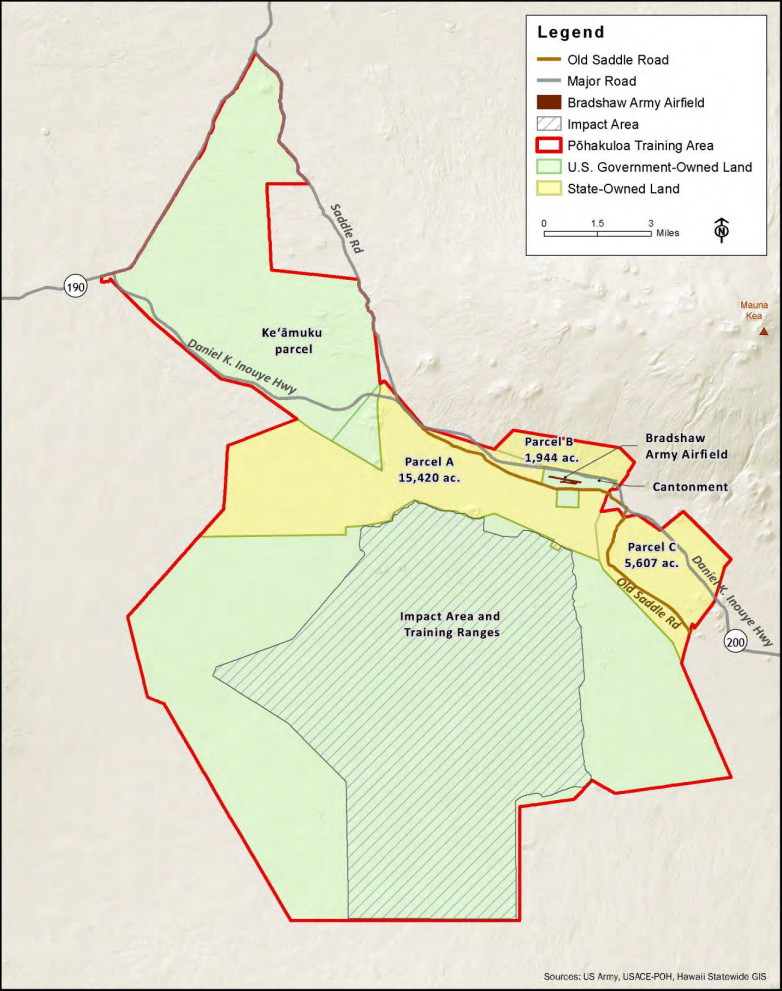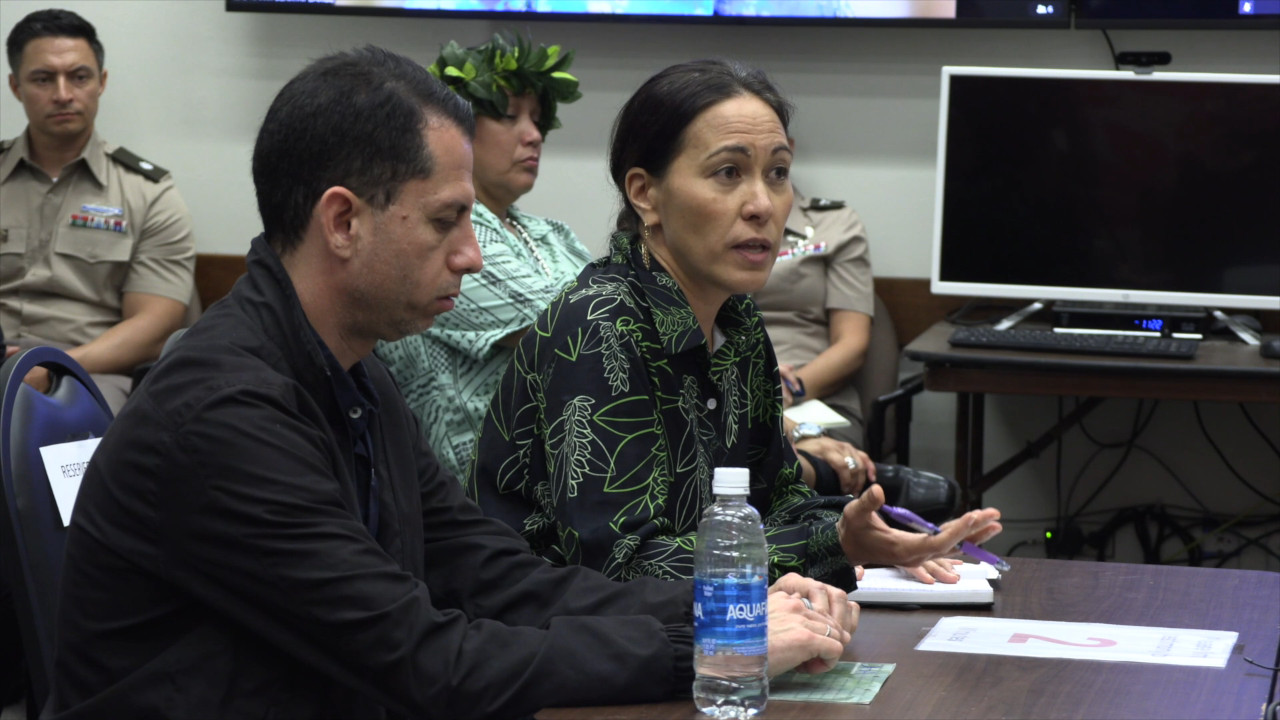(BIVN) – The Office of Hawaiian Affairs released an official statement over the weekend on the Hawaiʻi land board decision to reject the U.S. Army’s Environmental Impact Statement on the proposed land retention at Pōhakuloa.
“The Office of Hawaiian Affairs supports the Board of Land and Natural Resources’ decision to reject the Final Environmental Impact Statement for the proposed retention of state lands at Pōhakuloa Training Area,” stated OHA board chair and Hawaiʻi island Trustee, Kaialiʻi Kahele. “This decision reflects a thorough review of the document’s legal, environmental, and cultural deficiencies, many of which OHA and others identified in public testimony.”
The EIS was required to analyze the environmental impacts associated with the Army’s effort to retain up to to approximately 22,750 acres of the 23,000 acres of State-owned land at Pōhakuloa Training Area (PTA) to support continued military training.

Figure 1-2 from the EIS showing the U.S. Government-owned and State-owned land at Pōhakuloa Training Area
“As the State and Hawaiʻi’s Congressional Delegation consider next steps, OHA remains steadfast in its commitment to ensuring that any future course of action honors the unique legal status of these lands and the trust obligations they carry,” Kahele continued. “These lands are not ordinary—they are part of an unrelinquished legacy. OHA will continue to prioritize protecting the rights and interests of the Native Hawaiian people and preserving the integrity of the public land trust.”
At the end of a lengthy hearing on Friday, five BLNR members voted in favor of a motion not to accept the EIS. One board member abstained, and another – Hawaiʻi island member, Riley Smith – voted in opposition to the motion. The vote came after hours of public testimony, which included input from OHA.
Leinaʻala Ley, the Chief Advocate for OHA, sat beside lead archaeologist Kamakana Ferreira, and delivered the following oral testimony:
The Office of Hawaiian Affairs shares with the board trustee duties with respect to Pōhakuloa, which are former crown and government lands of the Hawaiian Kingdom. Your trustee duties stand above and inform your execution of your duties under HEPA. One of the duties that we share is to ensure the preservation of the ceded lands corpus until a resolution of Native Hawaiian claims to the former government and crown lands, and this has not occurred with respect to preserving the ceded lands trust.
OHA disagrees with the Army that its analysis of the method of retention is sufficient. The Army has discussion of a fee simple um method of keeping the land, essentially taking buying the land outright, and forever alienating it from being returned to the Native Hawaiian people. This is not a separate alternative and it states in the EIS that the only difference between free retention and lease retention is the fact that there’d be different management in place. Which is, of course, not not true. And the full implication of what it means to alienate land was not set forth clearly. The public did not have a chance to fully comment on this.
OHA also requested in our comments that the Army consider a shorter lease term, and in its response it said simply a 10-year lease term is not sufficient to meet its requirements. But there is a big stretch between 10 years and 65 years. So the Army had a duty to consider: what are its other options?
I’ll go our other two main points that are in our written testimony: We disagree with the sufficiency of the archaeological pedestrian survey; that’s not the same as an archaeological inventory survey. The aʻa flow that the army has not surveyed would be a key area where there’s likely to be native Hawaiian burials and other artifacts. As you all know the army has found kiʻi and other culturally significant – religiously significant – artifacts already in this area, and there are likely to be more. A full archaeological inventory survey should be completed.
OHA requested in 2022 that the Army do HRS chapter 6E concurrent with HRS chapter 343, and the Army chose not to do that. And as a result, we do not have a full disclosure of all the potential cultural impacts, and there is no opportunity again for us to consider mitigation measures as part of the 343 process. It should have occurred.
The Army’s current lease for 23,000 acres of state-owned land at Pōhakuloa is set to expire in 2029.


by Big Island Video News7:02 am
on at
STORY SUMMARY
HONOLULU - OHA chair Kaialiʻi Kahele says the land board decision reflects "a thorough review of the document’s legal, environmental, and cultural deficiencies".